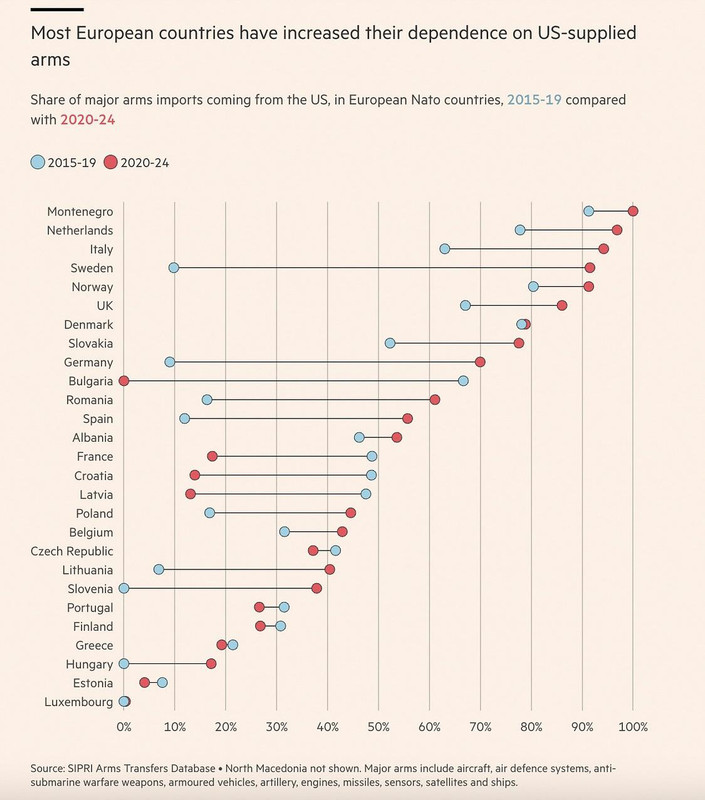Buy European
Overview:
The community to discuss buying European goods and services.
Rules:
-
Be kind to each other, and argue in good faith. No direct insults nor disrespectful and condescending comments.
-
Do not use this community to promote Nationalism/Euronationalism. This community is for discussing European products/services and news related to that. For other topics the following might be of interest:
-
Include a disclaimer at the bottom of the post if you're affiliated with the recommendation.
-
No russian suggestions.
Feddit.uk's instance rules apply:
- No racism, sexism, homophobia, transphobia or xenophobia
- No incitement of violence or promotion of violent ideologies
- No harassment, dogpiling or doxxing of other users
- Do not share intentionally false or misleading information
- Do not spam or abuse network features.
- Alt accounts are permitted, but all accounts must list each other in their bios.
- No generative AI content
Useful Websites
-
General BuyEuropean product database: https://buy-european.net/ (relevant post with background info)
-
Switching your tech to European TLDR: https://better-tech.eu/tldr/ (relevant post)
-
Buy European meta website with useful links: https://gohug.eu/ (relevant post)
Benefits of Buying Local:
local investment, job creation, innovation, increased competition, more redundancy.
European Instances
Lemmy:
-
Basque Country: https://lemmy.eus/
-
🇧🇪 Belgium: https://0d.gs/
-
🇧🇬 Bulgaria: https://feddit.bg/
-
Catalonia: https://lemmy.cat/
-
🇩🇰 Denmark, including Greenland (for now): https://feddit.dk/
-
🇪🇺 Europe: https://europe.pub/
-
🇫🇷🇧🇪🇨🇭 France, Belgium, Switzerland: https://jlai.lu/
-
🇩🇪🇦🇹🇨🇭🇱🇮 Germany, Austria, Switzerland, Lichtenstein: https://feddit.org/
-
🇫🇮 Finland: https://sopuli.xyz/ & https://suppo.fi/
-
🇮🇸 Iceland: https://feddit.is/
-
🇮🇹 Italy: https://feddit.it/
-
🇱🇹 Lithuania: https://group.lt/
-
🇳🇱 Netherlands: https://feddit.nl/
-
🇵🇱 Poland: https://fedit.pl/ & https://szmer.info/
-
🇵🇹 Portugal: https://lemmy.pt/
-
🇸🇮 Slovenia: https://gregtech.eu/
-
🇸🇪 Sweden: https://feddit.nu/
-
🇹🇷 Turkey: https://lemmy.com.tr/
-
🇬🇧 UK: https://feddit.uk/
Friendica:
-
🇦🇹 Austria: https://friendica.io/
-
🇮🇹 Italy: https://poliverso.org/
-
🇩🇪 Germany: https://piratenpartei.social/ & https://anonsys.net/
-
🇫🇷 Significant French speaking userbase: https://social.trom.tf/
Matrix:
-
🇬🇧 UK: matrix.org & glasgow.social
-
🇫🇷 France: tendomium & imagisphe.re & hadoly.fr
-
🇩🇪 Germany: tchncs.de, catgirl.cloud, pub.solar, yatrix.org, digitalprivacy.diy, oblak.be, nope.chat, envs.net, hot-chilli.im, synod.im & rollenspiel.chat
-
🇳🇱 Netherlands: bark.lgbt
-
🇦🇹 Austria: gemeinsam.jetzt & private.coffee
-
🇫🇮 Finland: pikaviestin.fi & chat.blahaj.zone
Related Communities:
Buy Local:
Continents:
European:
Buying and Selling:
Boycott:
Countries:
Companies:
-
!deapple@lemm.ee (old)
-
!deapple@piefed.social (new)
-
!deamazon@lemm.ee (old)
-
!deamazon@piefed.social (new)
Stop Publisher Kill Switch in Games Practice:
-
!skg@lemmy.dbzer0.com (new)
Banner credits: BYTEAlliance
view the rest of the comments

I'd like to know a bit more about this graph.
Things are always more complex than they seem and I'd hate for relevant news to contribute to someone's doomscrolling habits. We have too much fear already.
So a couple of comments from the top of my head:
You don't buy stuff like fighters everyday so the data points are quite scattered over time and have huge weights.
Does this graph represent money spent or commitments?
The first date is in 2015, after the Crimea annexation which probably spurred arms deals and at that time most likely from the US since there was a strong NATO positive momentum at the time.
The second date is in 2020 so five years later. If the graph displays money spent then the deals made after the annexation of Crimea would only start to show up a few years later. This would also explain the overal shift towards US buys.
Another thing to note is that the shift displayed here happened in a five year time period. It's also been five years since the last data point on the graph.
The shift towards EU manufactured military equipment is still expected to be somewhere in the future so there's little doubt that the issue is wrongly depicted. However it is a bit two dimensional when you conider the fact that the journalist made the choice of what to include and what not to include. They could've chosen to include a projection of future spending or perhaps more historical data. They could also have added a breakdown of purchaed equipment.
Lastly, the title is "Most European countries have increased their dependence on US-supplied arms". Again, I don't doubt this is true but I would also like to see these numbers compared to the entire defense budgets, their growth and if possible a comparison between how much has been bought and the value of existing equipment. Any of these metrics could put this graph in a very different light.